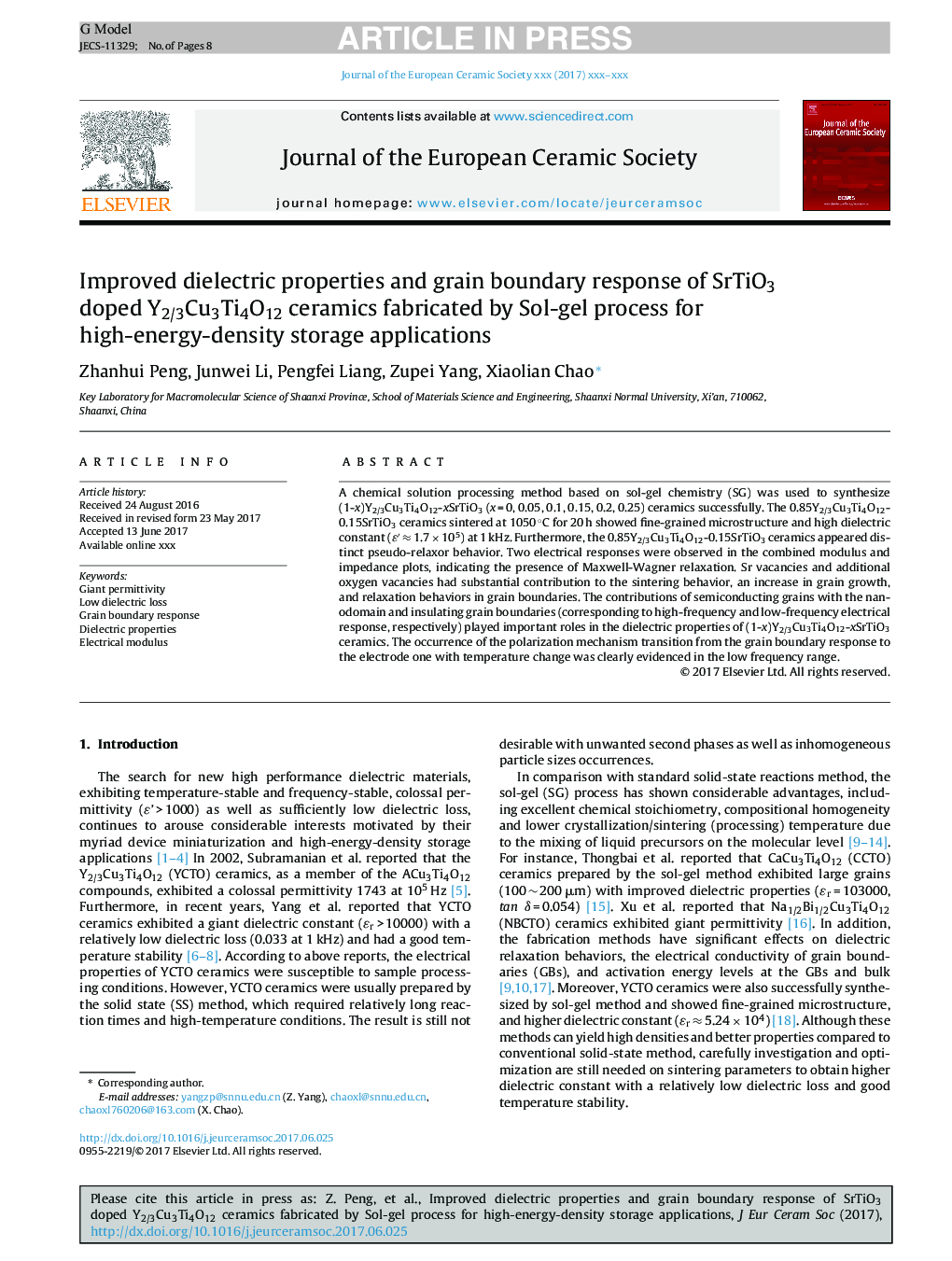| Article ID | Journal | Published Year | Pages | File Type |
|---|---|---|---|---|
| 5440322 | Journal of the European Ceramic Society | 2017 | 8 Pages |
Abstract
A chemical solution processing method based on sol-gel chemistry (SG) was used to synthesize (1-x)Y2/3Cu3Ti4O12-xSrTiO3 (x = 0, 0.05, 0.1, 0.15, 0.2, 0.25) ceramics successfully. The 0.85Y2/3Cu3Ti4O12-0.15SrTiO3 ceramics sintered at 1050 °C for 20 h showed fine-grained microstructure and high dielectric constant (εâ²Â â 1.7 Ã 105) at 1 kHz. Furthermore, the 0.85Y2/3Cu3Ti4O12-0.15SrTiO3 ceramics appeared distinct pseudo-relaxor behavior. Two electrical responses were observed in the combined modulus and impedance plots, indicating the presence of Maxwell-Wagner relaxation. Sr vacancies and additional oxygen vacancies had substantial contribution to the sintering behavior, an increase in grain growth, and relaxation behaviors in grain boundaries. The contributions of semiconducting grains with the nanodomain and insulating grain boundaries (corresponding to high-frequency and low-frequency electrical response, respectively) played important roles in the dielectric properties of (1-x)Y2/3Cu3Ti4O12-xSrTiO3 ceramics. The occurrence of the polarization mechanism transition from the grain boundary response to the electrode one with temperature change was clearly evidenced in the low frequency range.
Related Topics
Physical Sciences and Engineering
Materials Science
Ceramics and Composites
Authors
Zhanhui Peng, Junwei Li, Pengfei Liang, Zupei Yang, Xiaolian Chao,
